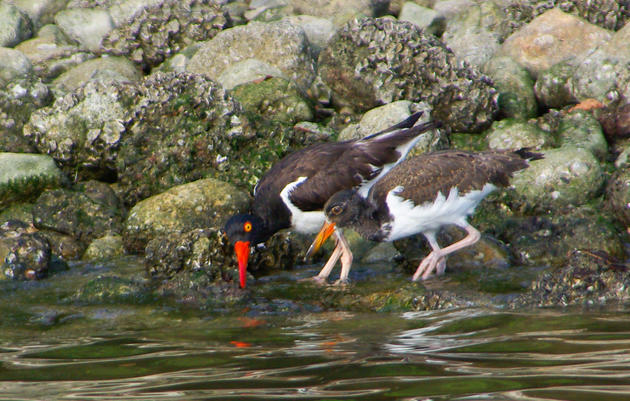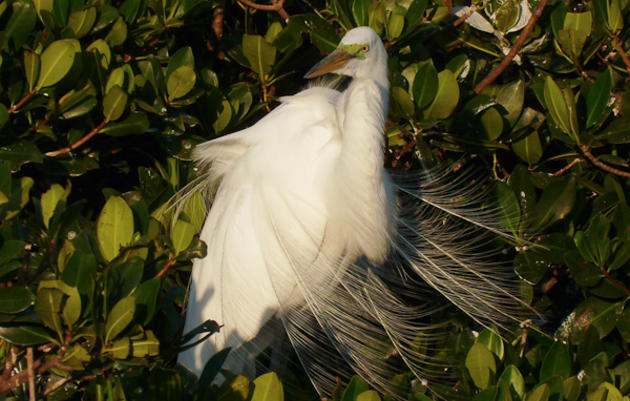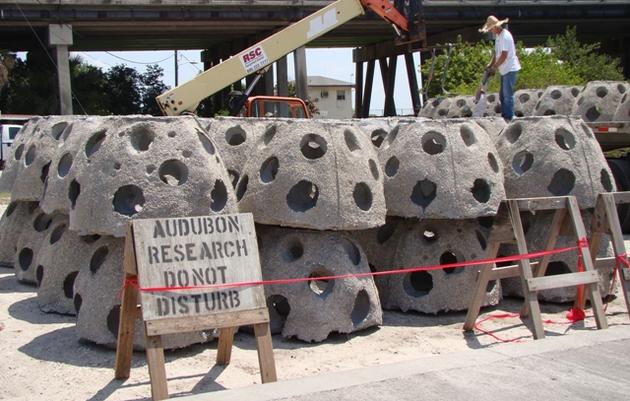Audubon’s Richard T. Paul Alafia Bank Bird Sanctuary is the one of Florida’s largest and most diverse nesting colony sites, with as many as 12,000 pairs of waterbirds representing 17 wading bird and shorebird species annually. The Sanctuary is leased from and managed in collaboration with The Mosaic Company and Port Tampa Bay as a bird sanctuary. Several species of imperiled birds nest on the island including Reddish Egret, Little Blue Heron, Tricolored Heron, and American Oystercatcher. Brown Pelican, an iconic and well-beloved seabird, also nests on the island.
The mid-winter months, when nesting activity is at a minimum, is the best time to continue the work of protecting this critically important nesting site. In 2011, 475 feet of oyster reef breakwater balls were installed on the south side of Bird Island to slow erosion and create quiet-water habitat for the birds and marine organisms on which they feed.
This winter, an additional 750 feet of shoreline were protected with a double row of oyster reef breakwater balls that more than double wave attenuation and the area of quiet-water lagoon between the breakwater and the beach. Each pH-neutral, hollow, concrete reef ball in an array weighs 800 pounds. Reef balls were placed in linear arrays 150-200 feet long separated by “marine wildlife” gap openings measuring 12-15 feet wide.
Grants from the National Fish and Wildlife Foundation, the Environmental Protection Commission of Hillsborough County’s Pollution Recovery Fund, and the Tampa Bay Estuary Program’s Bay Mini-Grant initiative, with support from in-kind and cash donations from a number of local businesses, individuals, and organizations, funded the project.
Additional benefits of the new breakwater reef, besides slowing erosion of Bird Island, include new substrate for the attachment of native oysters and other marine animals, filter-feeders that affect water quality, and foraging habitat for American Oystercatchers and other shorebirds, including Spotted Sandpipers and Ruddy Turnstones. The quiet water lagoon behind the breakwater facilitates establishment of mangroves and cordgrass on the shoreline and provides habitat for estuarine fish, crabs, and other invertebrates, food for wading birds, seabirds and shorebirds.











